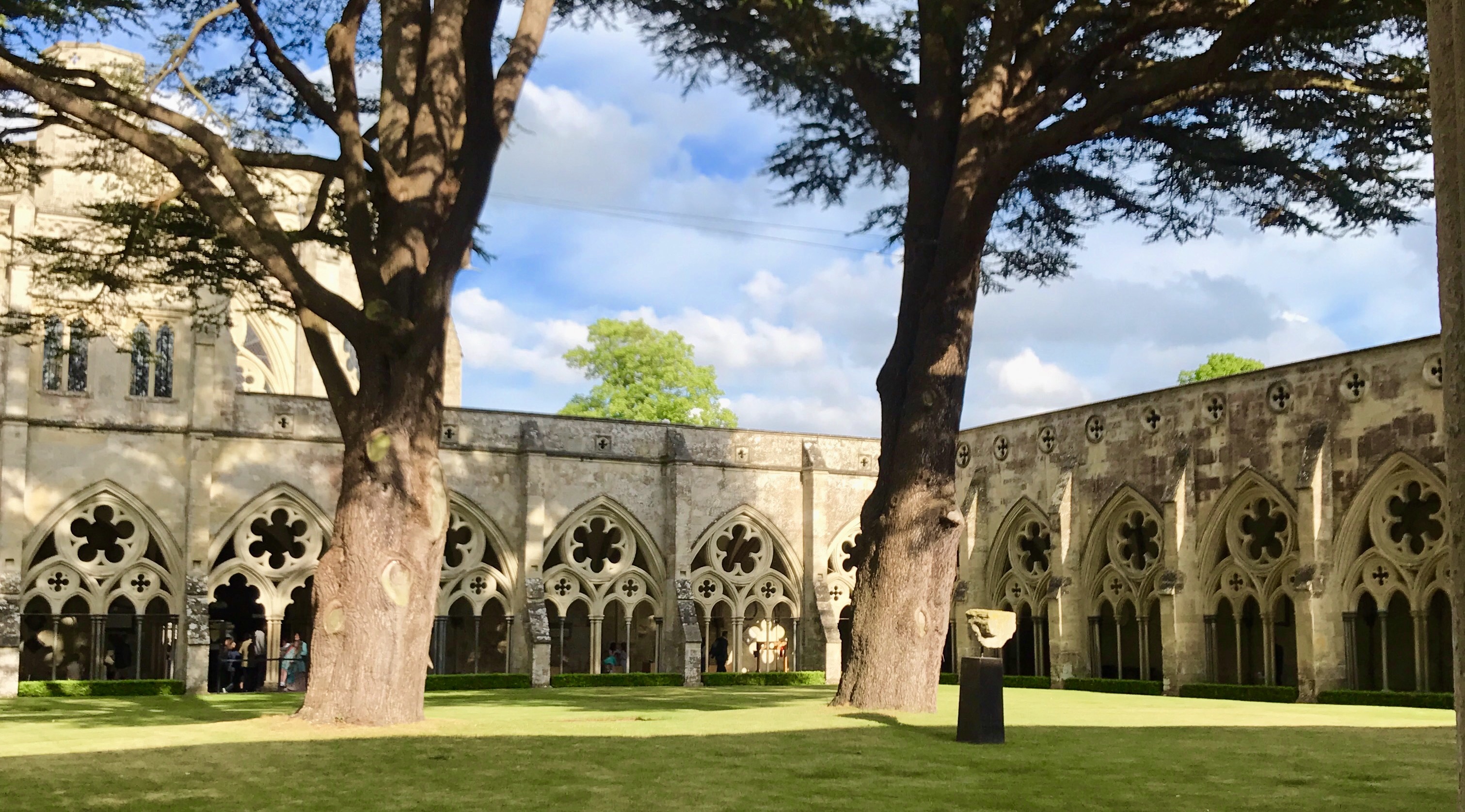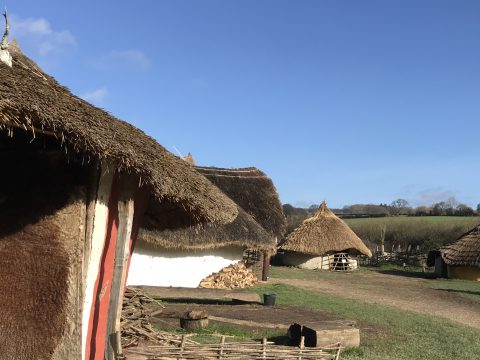
Another Inset day just a couple of weeks prior to the Covid-19 lockdown and the Littlest decided to do her own ‘research’ as to where she wanted to go for the day and that’s how we ended up being buffeted by the wind walking around English Heritage’s Old Sarum.

I must have driven past the site hundreds of times since the Tribe started going to school in Salisbury. An unassuming entrance, but ‘wow!’ definitely worth visiting and the views across the city with the spire of Salisbury Cathedral rising in the distance, are spectacular.

Old Sarum is an Iron Age hillfort, a royal castle, a cathedral, the earliest settlement of Salisbury and for 150 years a major centre of both secular and ecclesiastical government. It is where the original cathedral first stood. English Heritage describes it as ‘… one of the most enthralling historic sites in southern England.’ How on earth have we not visited before?! It is on a windswept hilltop with long distance views across the valley, the earthworks of the Iron Age ramparts forming an outer ring with the motte of the medieval castle forming the inner ring. The hillfort is believed to have been established before 400BC and was then occupied after the Roman invasion of AD43 when it became known as Sorviodunum and settlements established both within (a military fort) and outside (civilian) the ramparts. Roman roads from Winchester, Cirencester, London and Exeter all converged at Old Sarum making it an important centre. Gradually there was less need for a fort and it’s thought to have became the area for a Romano-British temple. In the Anglo-Saxon period Old Sarum (known in Anglo-Saxon as Searobyrg) became the location for the mint when it was moved from nearby Wilton. Gold coins bearing the name of King Ethelred (978-1016) have been discovered at the site as has an impressively ornate gold ring bearing the name of King Ethelwulf of Wessex (839-858), now located in the British Museum. The Domesday Book states that before 1066 Old Sarum was a borough and known as Sarisberie.

It was the decision of William the Conqueror, following his conquest, to build a royal castle in the middle of Old Sarum’s earthworks that changed the site. The hillfort was divided in two with a complex of apartments, halls and towers in the inner area and a huge outer bailey (a defensive wall around a courtyard that surrounded the motte – basically where the soldiers, servants and animals lived). A section of the bailey was also chosen as the site for a new cathedral after the 1075 Council of London decreed that the see should be moved from Sherborne to Old Sarum. Work on the cathedral was started by Herman, Bishop of Ramsbury and of Sherborne but died in 1078. His successor Osmund (nephew of William the Conqueror) is known as the builder of the cathedral in the 1091 foundation charter and became the first Bishop of Salisbury by authority of Pope Gregory VII and consecrated by Archbishop Lanfranc in 1078. Under Osmund a scriptorium was established using a community of scribes and scholars who produced a number of manuscripts – astonishingly, 60 survive including the texts of Osmund’s 1091 foundation charter. He was also part of the census that became the Doomsday Book. They are now kept in Salisbury Cathedral Library where St Osmund has a tomb shrine. Absolutely extraordinary that these documents have survived and shows the importance of the written word. Osmund was canonised in 1457 by Pope Callistus III, becoming the last English person to become a saint until the canonisation of Thomas More and John Fisher in 1935.

Old Sarum’s most powerful and influential bishop, Roger (1102-1139), rebuilt both the castle and the cathedral on a grand scale, although neither were used for long as the cathedral was moved to Salisbury in 1220 and few people continued to live in the castle or its ramparts after 1400. Bishop Roger also built a new bishop’s palace next to the cathedral which is believed to have been the most extravagant building of its day. The historian William of Malmesbury (1080-1143) said of Bishop Roger that ‘…he erected buildings large in scale, expensive and very beautiful to look at – the courses of stone being laid so exactly that the joints defy inspection and give the whole wall the appearance of a single rock-face. Salisbury [Old Sarum] cathedral he rebuilt and richly furnished so that it is passed by no church in England surpasses many, and he himself can say to God with perfect truth – “Lord, I have loved the beauty of Thy house”.’ Despite this, he didn’t live to see the cathedral completed, the completion being done by his successor, Bishop Jocelyn de Bochum. The cathedral was moved to a new site for several reasons – scarcity of water as it had to be brought up from the valley, lack of accommodation for the clergy, the fact the cathedral itself was ‘a constant danger to the congregation’ as it was falling down and the site was so windy that it times it was almost impossible to hear services.

Today, all that remains of the cathedral are the location of its footprint and some stones, as much of it was taken to be reused in the new cathedral. Standing on the motte above, it’s still pretty impressive to see the size of it – aerial photos are quite striking. Definitely a place worth visiting if you enjoy history and if you don’t want to pay to go into the site itself or you’re not a member of English Heritage, you can still walk around the outer ring which includes the ruins of the original cathedral and awesome views of Salisbury. Just remember your woolly hat.




